 |
President: Vice President: Secretary: Treasurer: |
Roger Cowley Jim Fusco Bernie Kosher Wade Evans |
 |
West Jersey Astronomical Society www.wasociety.us
Welcome to the Official Home Page of the West Jersey Astronomical Society (formerly known as the Willingboro Astronomical Society). Our club is in its 50th year of serving both the public and the amateur astronomers of the Delaware Valley. We have a long history of public education, star parties, interesting meetings, in-depth training and experienced leadership. We are a 501(c)(3) tax-exempt organization. Click here for membership information (dues can now be paid through PayPal).
Announcements Last Update: Saturday, September 02, 2017
| Sept 6 | Full Moon at 3:03 am EDT in Aquarius. The moon will be 1.4° from Neptune (center to center). |
| Sept 15 | Informal Meeting, 7:30 pm at the Virtua Health and Wellness Center in Moorestown, NJ. As always, guests are welcome and no astronomical experience is necessary. Use the Main Entrance and check with the security guard who will direct you to the conference room. |
| Sept 20 | New Moon at 1:30 am EDT in western Virgo. |
| Sept 22 | Equinox at 4:02 pm, Autumn begins for the Northern Hemisphere. |
| Sept 22 | The Black Forest Star Party begins at Cherry Springs State Park, Pennsylvania. Runs through September 24. |
| Sept 23 | Public Star Watch at Batsto. Check back here on the day of the event for the go/no-go weather call. |
| Oct 6 | Formal Meeting, 7:30 pm at the Virtua Health and Wellness Center in Moorestown, NJ. |
| Oct 14 | WAS 50th Anniversary Dinner, details to follow, but mark the date on your calendar now! |
Photo Spotlight Images last posted 9.02.2017
Here are some member pictures of the August 21,
2017, Solar Eclipse...
Members who have a photo of the
eclipse may submit it to the for inclusion here.
Steve Mattan
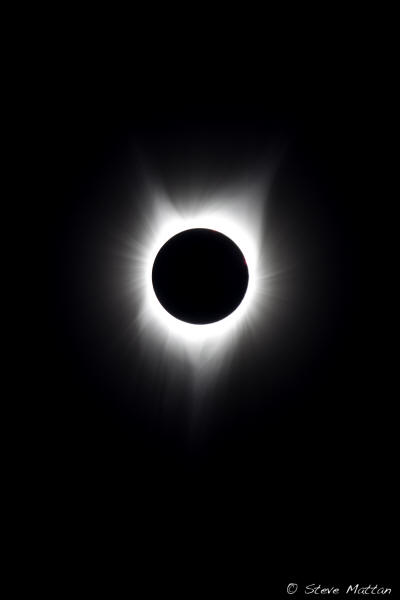
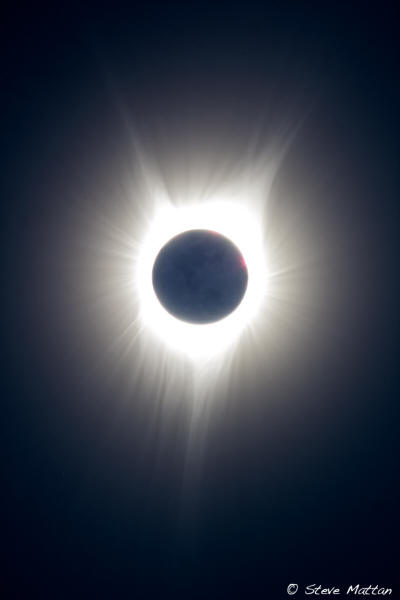
Steve Mattan captured the image of the eclipse on the left at 17:21:26 UT (10:21 am PDT), the middle of totality, from the Bandit Springs trailhead outside Prineville, Oregon. He used a Canon 60D digital SLR camera and a Canon 100-400 mm f4.5-5.6L USM zoom lens, set to 400 mm focal length, on an AstroTrac TT320X-AG equatorial mount. It was exposed 1/4 second at f/8, ISO 100. The image on the right has enhanced brightness and shows reddish tinges from prominences on the western (upper) limb, extended detail in the corona, and if you look closely, lunar surface features illuminated by earthshine.
————————————————————
Arnie Rosemoff
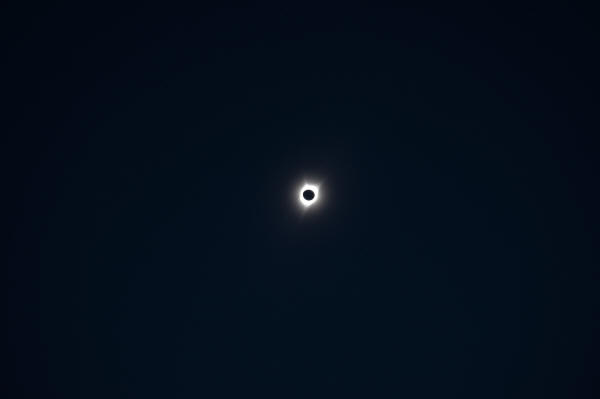
Arnie Rosemoff captured this wide-field image of the totally-eclipsed sun with his Apple iPhone 6s from Prineville, Oregon. The previous morning, Sunday August 20, he also captured the Old Moon (about 30 hours before new) as it closed-in on the sun for the eclipse.
————————————————————
John Ambrose
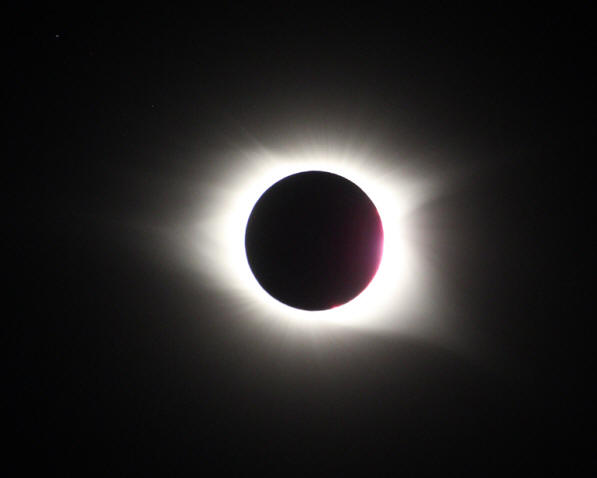
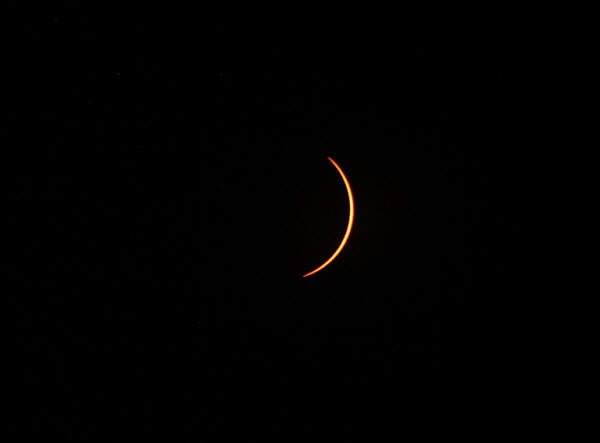
John Ambrose observed the totally-eclipsed sun from Santee Lakes Campground in South Carolina, and captured images with a Canon Rebel 60Da digital SLR camera and a 70 to 300 mm zoom lens, set to 300 focal length, tracking on an iOptron mount. The upper image above was taken at the end of totality as the reddish chromosphere was reappearing. Exposed 1/200 second at f/5.6, ISO 2000. The lower image was taken just after the end of totality as a thin sliver of sunlight reappeared. Exposed with a full-aperture solar filter, 1/400 second at f/6.3, ISO 2000. More of John's eclipse pictures here.
————————————————————
Jim Mack
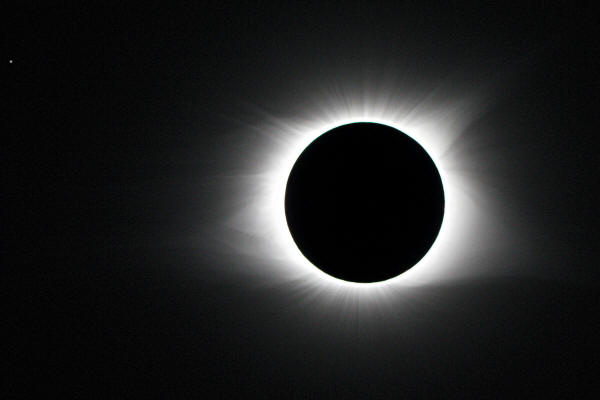
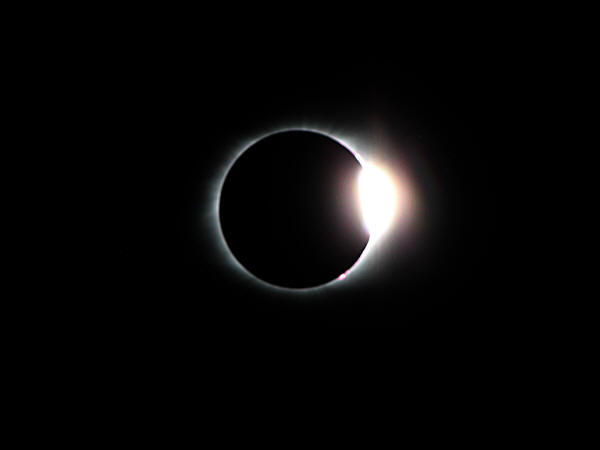
Jim Mack observed the totally-eclipsed sun from the centerline in Bolton, South Carolina. The images above were taken with a Canon Rebel T2i digital SLR camera and a William Optics 80 mm f/6.9 refractor tracking on a Celestron CG5GT German equatorial mount. The upper image showing the Corona during totality (and Regulus in the upper-left corner) was exposed 1/100 second at ISO 1600. The lower image with the Diamond Ring at the end of totality was exposed 1/1600 second at ISO 1600.
————————————————————
Roger Cowley
WAS President Roger Cowley captured this creative image during the partial phase of the eclipse, using the "spaghetti strainer" method (i.e., pinhole projection en masse) to spell out WAS 50 in honor of the club's upcoming anniversary. Roger was in Glendo, Wyoming, to observe totality with a Sky & Telescope tour.
————————————————————
Steven Kutoroff
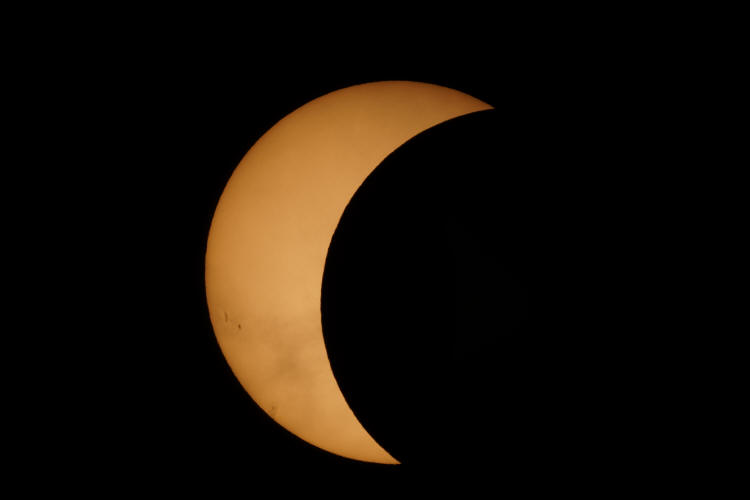
Steven Kutoroff captured this image of the partially-eclipsed sun at 2:25 pm EDT from Cherry Hill, NJ, catching a gap in the clouds that engulfed the WAS home area by mid-eclipse at 2:45 pm. Taken with a Sony A6000 mirrorless digital camera through a Questar telescope equipped with a full-aperture solar filter (estimated ND4.5). Exposed 1/1000 second at ISO 100.
————————————————————
Russell King
Russell King captured the "Diamond Ring" an instant before the start of totality (upper image) and then totality itself (the lower image) from Belton, South Carolina, where mid-eclipse was at 2:43 pm EDT. For both pictures, he used a Canon Rebel T2i digital SLR camera and a lens at 220 mm focal length. Both exposed 1/60 second at f/8, ISO 800. Click here to see a series of images Russell put together from the start to the finish of totalty.
————————————————————
Howard Schneck
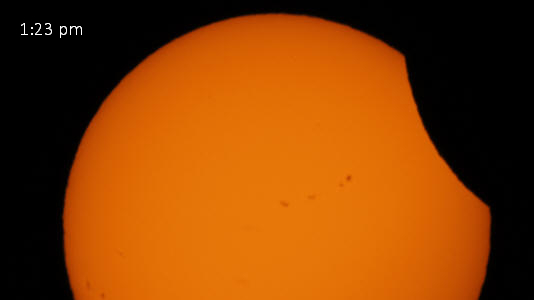
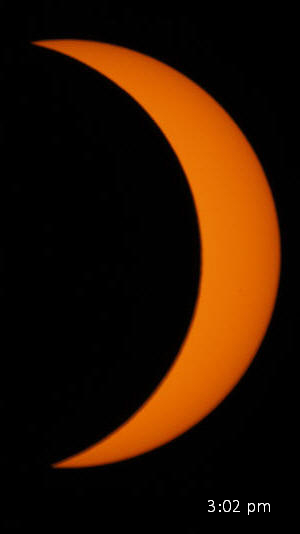
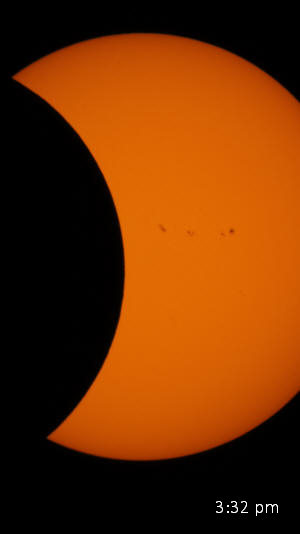
Howard Schneck captured this series of images from Santee National Wildlife Refuge in South Carolina during the partial phases at the times indicated (maximum eclipse, and the middle of 2½ minutes of totality, was about 2:43 pm EDT). He used a Celestron Edge 800 and a Sony NEX-5 digital camera. He did not take any stills during totality (although he does have video). He was busy using the brief period of totality to observe the eclipsed sun (e.g., the Diamond Ring and the Corona) and the darkened sky around it with the planets Venus, Jupiter and Mars.
Click here for the previous home page image.
Note: Club President, Roger Cowley, has published a new book, Gauging the Solar System: Measuring Astronomical Values for Yourself. Have fun and do more than just snap pictures of the sky! Available at Amazon too.
Click to contact the . Members are encouraged to submit their astronomical images to the webmaster for inclusion on the WAS Home Page. Be sure to include a description, date and time, as well as equipment and photo data.
USNO Solar System Object Apparent Disc